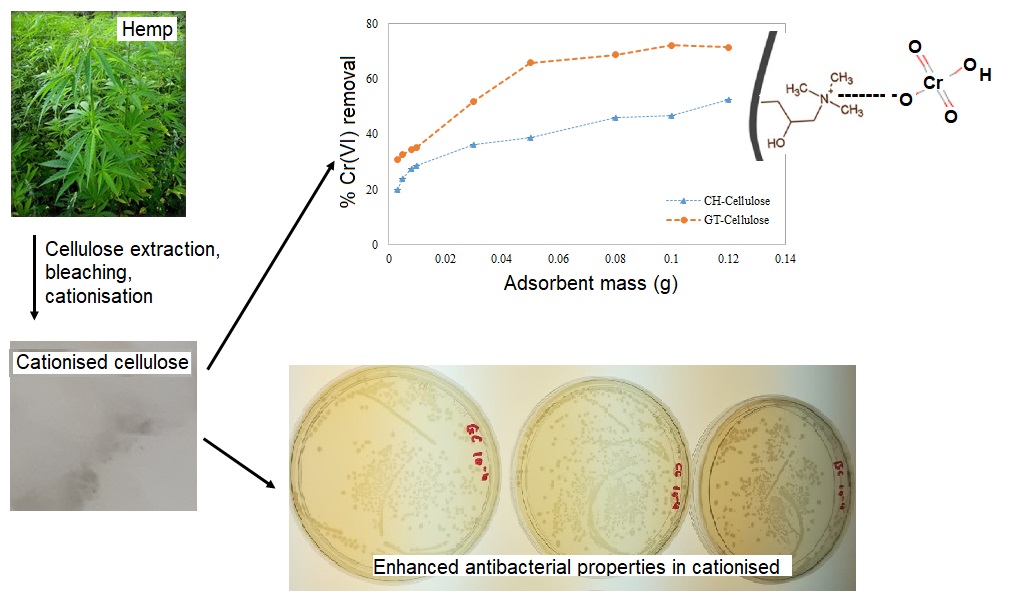Cationised hemp cellulose was prepared by etherification with two quaternary ammonium salts: 3-chloro-2-hydroxypropyl trimethyl ammonium chloride (CHPTAC) and glycidyltrimethylammonium chloride (GTMAC) and examined for (i) the efficiency of Cr(VI) removal under acid mine-drainage (AMD) conditions, and (ii) antibacterial activity. Adsorbents were characterised by electron microscopy, Fourier transform infrared (FTIR), CP-MAS 13C nuclear magnetic resonance (NMR) spectroscopy, elemental composition and surface charge. FTIR and solid state 13C NMR confirmed the introduction of quaternary ammonium moieties on cellulose. 13C NMR also showed that cationisation decreased the degree of crystallisation and lateral dimensions of cellulose fibrils. Nevertheless, 47 % - 72% of Cr(VI) ions were removed from solutions at pH 4, by 0.1 g of CHPTAC and GTMAC-cationised cellulose, respectively. Adsorption kinetics followed the pseudo-second order model and isotherms were best described by the Freundlich and Dubinin-Radushkevich models. When GTMAC-modified cellulose was applied to AMD contaminated water (pH 2.7), however, Cr(VI) uptake removal decreased to 22% likely due to competition from Al and Fe ions. Nevertheless, cationised materials displayed considerable antibacterial effects, reducing the viability of Escherichia coli by up to 45 % after just 3 hours of exposure. Together, these results suggest that cationised cellulose can be applied in the treatment of Cr(VI)-contaminated mine water particularly if pre-treatments to reduce Fe and Al concentrations are applied.

